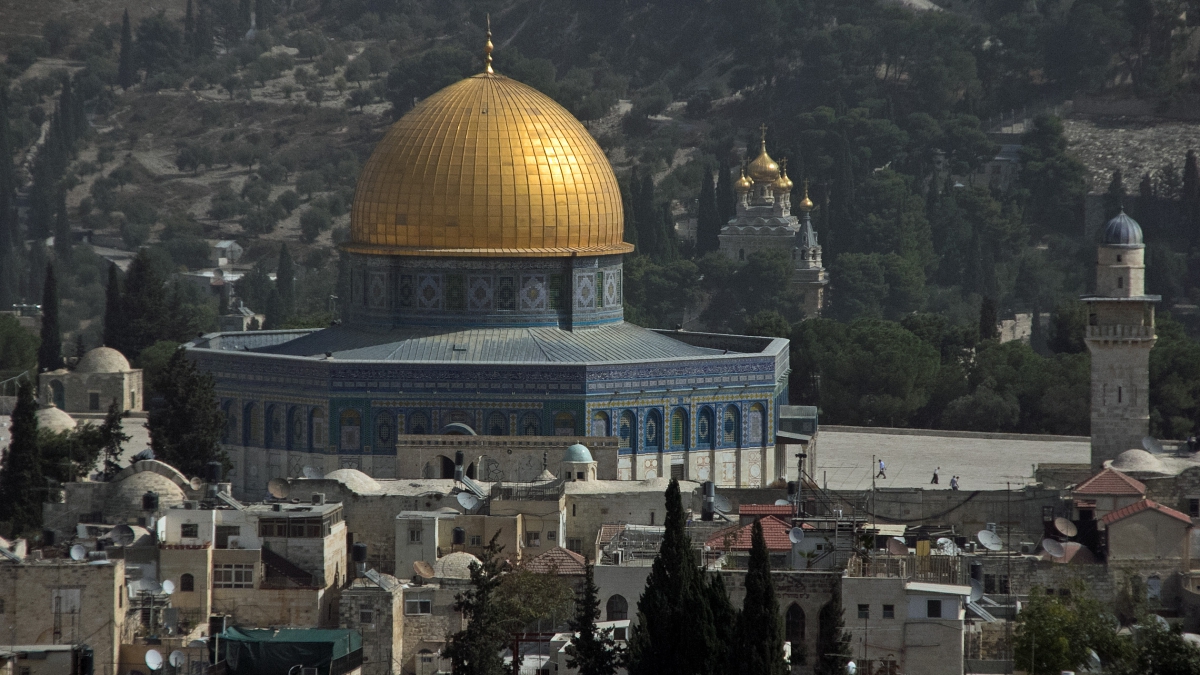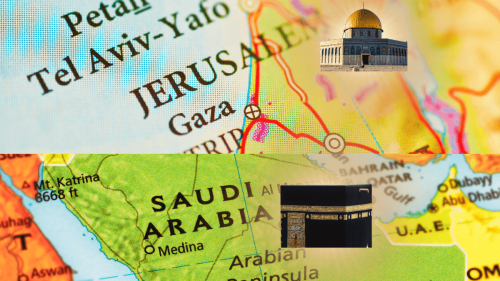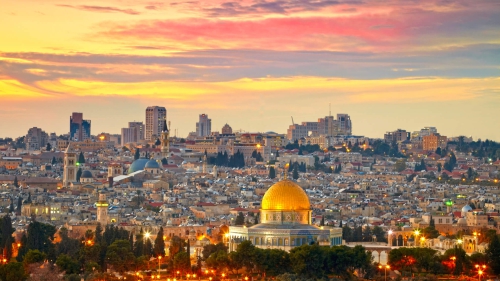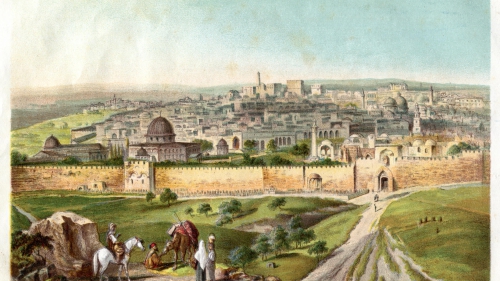The Significance of ‘Isra and Miraj

‘Isra and Miraj were the most miraculous and dignified journeys of the Prophet (Sal-lal-lahu alayhi wa sal-lam), which took place in the Shab-e-Miraj (or the Night of Miraj) in the month of Rajab before his migration to Madinah. This miraculous journey was Allah’s wonderful response to the Prophet’s (S) sad state in the year, which is commonly known as “the year of great sadness” in which he (S) lost his beloved wife Khadija (Radi-Allahu Anha) and uncle Abu Talib, leaving him completely alone with no protection for him and his small band of Muslims against the hostile Quraysh (blasphemers) in Makkah; he (S) was also mercilessly persecuted by pagan Arabs in at-Ta’if when he invited them to Islam.
It was during these trying times, when circumstances had reached desperate proportion, that Allah sent Angel Jibril (Alayis Salam) to take Rasulullah (S) on the most glorious journey ever experienced by anyone on earth.
On that blessed night, Muhammad (S) was taken physically from the Grand Mosque in Makkah to al-Aqsa Mosque in Jerusalem [Al-Quds], a month’s journey of 1230 Km (for a caravan). And this part of the journey is called ‘Isra.
After reaching Jerusalem, the Prophet (S) entered the Masjid al-Aqsa where Allah had assembled for him all the Prophets – from Adam (AS) to Isa (AS). Prophet Muhammad (S) led them in the prayer.
The second part of the nocturnal journey, which is called Miraj, took Muhammad (S) from Jerusalem to the heavens when he passed the boundaries of the physical universe to be in divine presence of Allah, and witness the Great Signs (al-Ayat ul-Kubra).
The supernatural journey is mentioned in the Qur’an:
“Glorified (and Exalted) is HE (above all that they associate with HIM) WHO took HIS slave (Muhammad (S)) for a journey by night from Al-Masjid-al-Haram (at Makkah) to Al-Masjid-al-Aqsa (in Jerusalem, the neighborhood) whereof WE have blessed, in order that WE might show him [Muhmmad (S)] of our Ayat (proofs, evidence, lessons, signs, etc.). Verily, HE is the ALL-HEARER, ALL SEER.” [Surah Al Isra, 17:01]
On his (S) onward journey to the Heaven to meet with Allah (SWT), first, Muhammad (S) met with Adam (AS) in the 1st Heaven (1st sky). Then he (S) went to the 2nd Heaven (2nd sky) and met with Yahya (AS) and then to the 3rd Heaven and met with Isa (AS). Then he (S) went to the 4th Heaven and met with Idris (AS). Then he (S) went to the 5th Heaven to meet with Haroon (AS). Next, he (S) went to the 6th Heaven where he (S) met with Musa (AS). The Prophet (S) was then taken to the 7th Heaven where he (S) met Ibrahim (AS). Then he (S) reached SIDRATUL MUNTAHA, the boundary demarcating tree beyond which no creature is ever permitted to cross over! [Note: Sidrah in Arabic means the lote-tree and muntaha the extreme edge or limit. Thus, literally, sidrat-al-muntaha means the lote-tree that is situated on the extreme edge or limit.]
After reaching SIDRATUL MUNTAHA, Jibril (AS) informed the Prophet (S) that this was his (AS) end point beyond which he (AS) was restricted and thus requested the Prophet (S) to proceed alone.
“(This was) when the lote-tree was covered with that which covered it [i.e., its splendor and glory exceeds all description. The divine glory and effulgence was such as can neither be conceived by man nor can any human language depict it adequately]. The sight (of the Prophet) did not swerve, nor did it transgress (its limit). Indeed, he (S) did see one of the greatest Signs of his LORD (Allah).” [Surah An-Najm, 53: 16-18]
The Prophet (S), thus, proceeded alone and prayer at 50 times a day was prescribed upon his (S) ummah (community) by Allah. Later, upon request from Muhammad (S) the number of prayer times was reduced to five times a day (with the reward of 50 times).
During his heavenly journey, the Prophet (S) was shown among other things the followings: the Angel In-Charge of Hell, the punishment that awaits the sinners who (i) devour the property of orphans, (ii) devour interests on money, and (iii) commit adultery.
After his return to Makkah from the Miraj, the Prophet (S) described to the people what had happened to him the previous night. There were many who doubted his (S) journey thinking that it was an illusion or a dream. The blasphemers belied the Prophet (S) and mocked him, saying, "We need a month to get there and back, and you are claiming to have done all this in one night?" They said to Abu Bakr, "Look at what your companion is saying. He says he went to Jerusalem and came back in one night." Abu Bakr told them, "If he (Muhammad (S)) said that, then he is speaking the truth. I believe him concerning the news of the heavens -- that an angel descends to him from the heavens. How could I not believe he went to Jerusalem and came back in a short period of time -- when these are on earth?" From that moment onward, the Companion, Abu Bakr (RA), was called "as-Siddiq" -- because of how strongly he believed all what the Prophet (S) said.
However, the truth manifested in two ways. First, the Prophet (S) described the caravans he had overtaken on the way home and said where they were and about when they might be expected to arrive in Makkah; and each arrived as predicted, and the details were as he had described.
The disbelievers questioned the Prophet (S): "If you are truthful, then describe to us Masjid al-Aqsa and its surroundings." They asked this because they knew Prophet Muhammad (S) had never been there before the previous night. Allah enabled His Messenger (S) to see Masjid al-Aqsa, and he described the masjid and its surroundings in exact detail.
Narrated Jabir bin Abdullah (RA) that he heard Allah’s Messenger (S) saying, “When the people of Quraysh did not believe me (i.e. in the story of my Isra (night journey), I stood up in Al Hijr and Allah (SWT) displayed Jerusalem in front of me, and I began describing to them while I was looking at it.” [Bukhari]
Moreover, the Prophet said, "On my way back, I saw some of your shepherds grazing their animals in a particular location. They were searching for a camel they had lost." The Prophet (S) continued by giving the description of the camel. When these shepherds came back, they told their people what happened to them--precisely as the Prophet had already told them.
Those blasphemers in Makkah admitted that the Prophet's (S) description was exact. And yet, they were still stubborn and rejected Islam. Unless God guides someone, even miracles are not enough to change one’s beliefs!
It is worth noting here that the Prophet Muhammad’s (S) ‘Isra also fulfilled the prophetic tradition of the Book of Malachi [in the so-called Old Testament]: “Behold, I will send my messenger, and he shall prepare the way before Me: And the Adonai (lord) whom ye seek, shall suddenly come to His temple, even the messenger of the covenant, whom ye delight in: behold, he shall come, saith the YHWH Sabaoth (Lord of the Hosts).” (3:1)
The Adon mentioned here in the Book of Malachi is none but Muhammad (S) who came suddenly to visit God’s temple in Jerusalem and later punished the Levites for their arrogance and rejection of truth, as foretold in the verse number 3. [For details on this subject: the interested readers may like to read Rev. David Benjamin Keldani’s book - Muhammad in the Bible.]
The Jewish Bible in its Book of Haggai does not fall behind this prediction either: “And I will shake all nations, and the Ahmad [Himdah] of all nations will come; and I will fill this house with glory, says the Lord of hosts.” [2:7] [Note: In the popular KJV of the Bible, the Hebrew word Himdah or the Aramaic word Himada was translated as the “desire”. The Bible contains several such irresponsible editing/translations of names throughout its pages.] As I have noted elsewhere, the Prophet Muhammad’s (S) other name was Ahmad. So, it is not difficult to understand that the Prophet prophesied in the Books of Malachi and Haggai are none other than Prophet Muhammad (S) who was suddenly brought into Jerusalem by Archangel Gabriel (Jibril) (AS) to sanctify the Temple – Al Aqsa.
This blessed journey of ‘Isra and Miraj is of great significance for Muslims for its miraculous nature and, among other things, for its establishment of the second crucial pillar in Islam: prayer five times a day. It is also important because it clearly shows Islam’s connection to and importance to Masjid Al-Aqsa, which is located in Jerusalem and is Islam’s third holiest mosque in Islam. In one Hadith, the Prophet (S) said: “Journeys should not be undertaken except to three mosques: this my mosque (in Madinah), the Sacred Mosque (in Makkah), and Al-Aqsa mosque.” (Bukhari)
‘Isra and Miraj is celebrated in all Muslim-majority countries when devout Muslims offer extra prayers and feed the poor.
[Excerpted and edited from the author’s book - Muhammad (S) & the Prescribed Highway to Peace – co-authored with M. Siddiqur Rahman; available in amazon.com.]
Topics: Jerusalem, Masjid Al Aqsa, Night Journey (Isra And Miraj)
Views: 24966
Related Suggestions

















